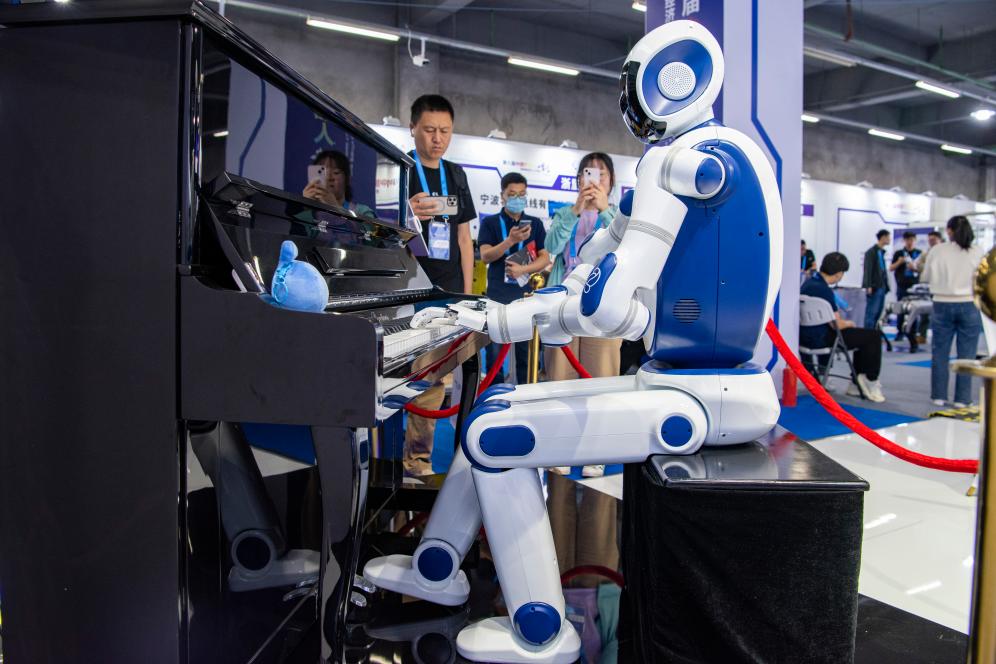Ground Gained amid Adversity

Given a complex international environment, China’s impressive economic performance augurs an upbeat development trajectory in the second half of the year.
While global economic recovery still falters, the Chinese economy stood out in the first half of the year (H1) with a year-on-year GDP growth of 5.5 percent, the fastest among major economies. Given a complex international environment – exacerbated by high global inflation and the spillover effect of certain major economies’ tightening monetary policy – China’s impressive economic performance augurs an upbeat development trajectory in the second half of the year. It also reflects the country’s impressive economic resilience.
“Market demand gradually recovered, production and supply continued to increase, employment and prices were generally stable, residents’ incomes grew steadily, and the overall economic operation rebounded and improved,” Fu Linghui, spokesperson for the National Bureau of Statistics (NBS), told a press conference on July 17.
Fu’s comment signified that China’s economy was back on the track of normal growth; hence just cause for renewed confidence in the immense potential and vitality of the Chinese economy.
As Justin Yifu Lin, former senior vice president and chief economist of the World Bank, pointed out in a signed article published by Xinhua, “Taking into account the need to address climate warming, narrowing the gap between urban and rural areas, an aging population and bottlenecks, China is capable of achieving an average annual growth rate of 5 to 6 percent through 2035.”
With a contribution of 77.2 percent to GDP, consumption became a major driving force of the country’s economic growth in H1. A raft of measures to promote consumption, combined with rising incomes, contributed to this consumption surge. In H1, national per capita disposable income rose to RMB 19,672, a year-on-year increase of 6.5 percent in nominal terms, and retail sales maintained a robust momentum with a growth rate of 8.2 percent year on year, totaling around RMB 22.76 trillion.

Meanwhile, the value-added service output expanded by 6.4 percent year on year in the January to June period. Traveling, catering, and other contact-based service consumption registered rapid expansion, the catering sector’s revenue having climbed 21.4 percent year on year.
“As the society and economy fully resumed normal operations, the economy is recovering, the consumption scenarios are expanding, policies to promote consumption are taking effect, spending by residents is steadily growing, and market retail sales are accelerating,” Fu said.
Green consumption has become a new bright spot. China’s new energy vehicle (NEV) output surged 42.4 percent year on year to 3.79 million units, and NEV sales rose 44.1 percent year on year to 3.75 million units in H1. The country has experienced exponential growth of its NEV output in recent years, July 3 having marked the milestone whereby the 20 millionth NEV rolled off the production line in Guangzhou, capital of south China’s Guangdong Province.
In May, China released a guideline to support rural residents’ purchases of NEVs with its focus on improving the charging infrastructure. Meanwhile, to further tap the domestic consumption potential, the country extended its preferential purchase tax policy for NEVs to the end of 2027. Preliminary calculations show that the policy will save consumers RMB 520 billion in tax exemptions and reductions.
There has, in tandem with the NEV boom, been a marked improvement in China’s related infrastructure. As at the end of May, 2023, the number of charging piles across the country expanded from less than 100,000 in 2015 to nearly 6.36 million.
China’s 5.5-percent growth in H1 is attributable to an enhanced economic structure and optimized driving force, according to Fu. Experts hold that development of new drivers should focus on both emerging industries and the transformation of traditional industries. Enterprises are hence advised to seize opportunities generated by industrial upgrading, the digital economy, and green transformation.

Artificial intelligence (AI) plays an ever more important role in China’s industrial upgrading. By adopting AI-enabled robots and equipment in its logistics center, Sinopharm Holding Guangzhou has enabled the warehouse to realize a 25-percent improvement in overall efficiency and a 15-percent increase in storage density, according to a Xinhua report. An industry report published by global market research firm International Data Corporation (IDC) states that, by 2025, 40 percent of Chinese manufacturers are expected to deploy AI-based tools to support decision-making processes and maximize data value. Zhong Zhenshan, vice president of IDC China, moreover predicts that China’s AI market scale will reach US $14.75 billion in 2023.
China’s value-added industrial output, an important economic indicator, rose 3.8 percent year on year in H1. As Fu observed: “The innovation-driven strategy has been implemented in an in-depth way, and new growth drivers have continued to grow, strongly boosting high-quality development.”
Meanwhile, China’s economic growth was also fueled in H1 by fixed-asset investment, by virtue of a 3.8 percent increase year-on-year which amounted to RMB 24.31 trillion. Also noteworthy is the strong growth of investment – 12.5 percent – in hi-tech industries. Wu Sa, deputy director of the Institute of Economic Research under China Academy of Macroeconomic Research, has observed the optimized structure of China’s fixed-asset investment.
As to the second half of the year, experts expect greater financial support to be directed towards entities of real economy, acceleration of China’s high-end manufacturing, and deep integration of advanced manufacturing and modern service industry.
 Facebook
Facebook
 Twitter
Twitter
 Linkedin
Linkedin
 Google +
Google +










